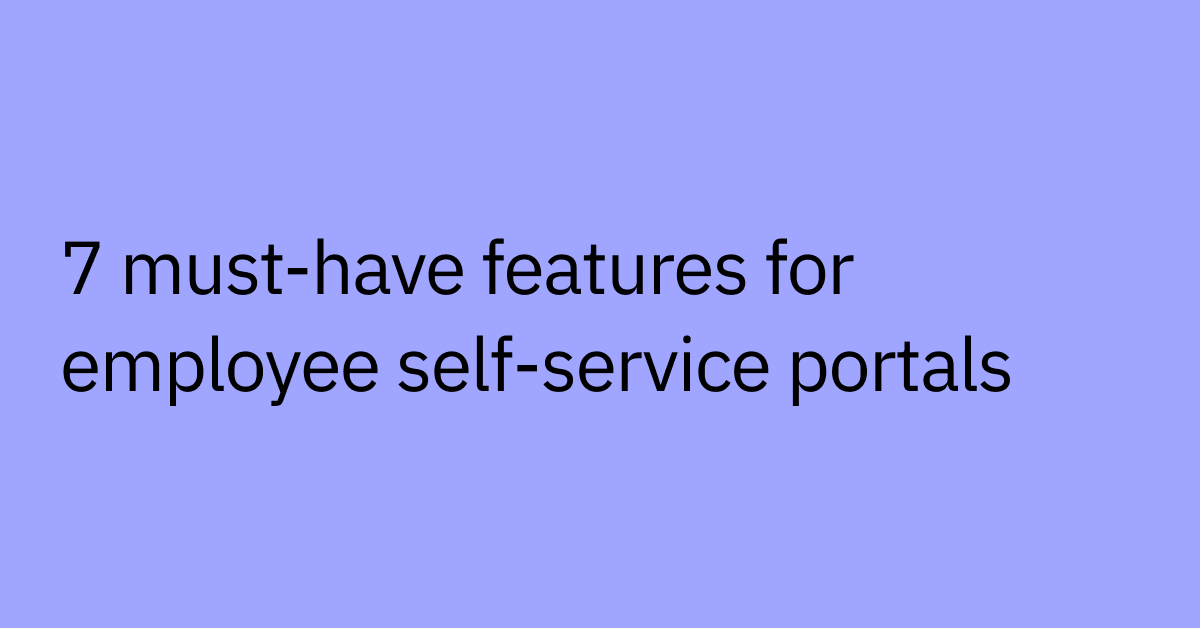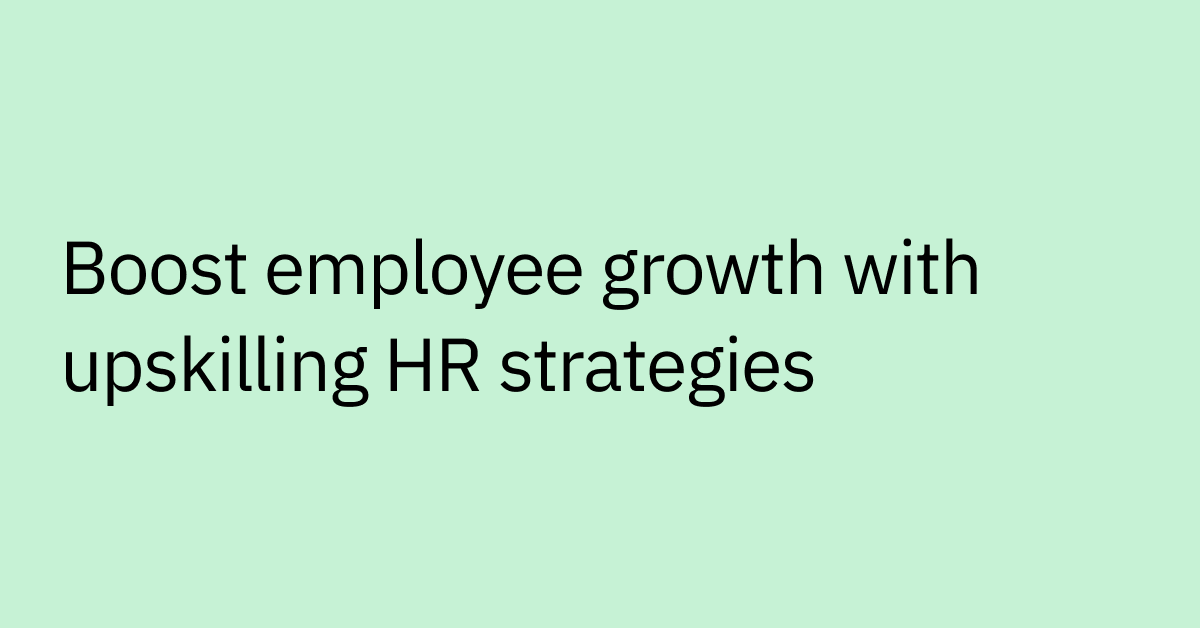Table of contents
Highlights
- Digital Employee Experience (DEX) encompasses all interactions employees have with digital workplace technology, emphasizing usability, efficiency, and satisfaction.
- A positive DEX can reduce frustration, boost productivity, and enhance employee support.
- Excellent DEX includes centralized access, intelligent support, proactive issue resolution, data-driven improvement, and fast problem solving.
- Agentic AI helps turns DEX from static monitoring into dynamic resolution, detecting patterns and orchestrating fixes in real time.
Every day, your employees log in with the expectation that technology will help them get work done—not slow them down. But when systems feel clunky, tools don’t talk to each other, or support takes too long, the cracks start to show: productivity drops, frustration builds, and IT teams get buried in tickets.
As a leader, you’re not just managing tools—you’re shaping the digital employee experience that determines whether people feel empowered or held back at work.
Improving your digital employee experience (DEX) can help. DEX defines how usable, efficient, and supportive your workplace technology feels to the people using it every day.
But simply measuring DEX isn't enough. You need to get ahead of your employee experience before challenges impact performance.
And that's something that agentic AI (systems that autonomously act on users' behalf) can bring through pattern detection, its ability to autonomously orchestrate fixes, and the way it can learn over time.
What is digital employee experience, really?
Digital employee experience (DEX) paints the whole picture in terms of the experience employees have with digital tools and workplace technology. It encompasses all interactions with workplace systems from the moment employees log into an application to the moment they submit a support request or complete a task.
DEX focuses on how intuitive, efficient, and satisfying these digital interactions are, all of which play a big role in driving employee productivity, engagement, and job fulfillment.
This isn't about simply providing the latest technology or tools. Communication and collaboration platforms, intranet solutions for centralized information, and enterprise software for specific functions are all important.
Still, the newest, shiniest product of the week doesn't mean it'll be the right solution for your employees.
The goal is to understand (and be realistic) with overall interaction and output employees have with the digital systems they’re expected to use, including usability, accessibility, and support.
If apps don't load quickly, if approvals get stuck, if information is hard to find... that's poor DEX. And that means your employees are more likely to be frustrated, or even find workarounds to the "solutions" and business processes that are in place.
In contrast, organizations with stronger DEX strategies tend to have employees who are more engaged, productive, and are more likely to stay with the company longer, in fact some have 51% less turnover.
Explore more about measuring and optimizing your employee experience strategy: Check out our ultimate guide to measuring employee experience and productivity.
Benefits of digital employee experience
Taking on a digital employee experience transformation can return plenty of measurable value across your organization:
- Increased employee engagement: When your tech stack works well together, employees feel supported rather than hindered or siloed by their tools. This can lead to higher job satisfaction and a stronger connection to their work.
- Boosted productivity and efficiency: Engaged employees are more productive (think a 17% increase in productivity!) yielding better performance, and improved profits. Streamlined workflows and instant access to information enable employees to spend more time on strategic work, less time battling systems.
- Enhanced collaboration and communication: Integrated platforms and consistent experiences can make it easier for teams to share knowledge, coordinate projects, and work together effectively.
- Reduced operational costs: Automated support and self-service options can decrease the burden on IT and HR teams, reducing ticket volume and freeing up resources for higher-value initiatives.
- Drive revenue growth: When employees are productive and engaged, they can focus on activities and projects that directly impact business outcomes and satisfaction, helping lead to 23% greater profitability.
- Makes AI innovation easier: Building a solid DEX foundation lays the groundwork for both infrastructure and user adoption, which can lead to the integration of more helpful AI tools across your organization.
Common DEX challenges
The biggest challenges in creating and sustaining an exceptional digital employee experience include:
- Ensuring integration and accessibility of digital tools across the organization for all employees
- Delivering consistent, personalized support tailored to employees' roles and locations
- Balancing data privacy and security with user-friendly functionality
- Keeping pace with evolving employee needs and rapidly changing technology trends
- Driving adoption and engagement with new tools and processes across the workforce
- Minimizing technical disruptions that interfere with daily workflows
- Providing timely, relevant information to employees when and where they need it most
Addressing these challenges takes continuous collaboration from IT, HR, and business units to maintain a positive digital experience for all. If everyone isn't on the same page, even the most advanced technology investments risk falling short of their potential value.
How to improve a digital experience strategy with AI
AI has the potential to transform how employees engage with their workplace, access information, and accomplish tasks. By streamlining processes and enhancing efficiency, it can drive greater productivity, boost job satisfaction, and improve employee retention.
Here are some actionable steps to improve and maintain digital employee experience:
1. Centralize and simplify access
Action: Build a single, AI-powered "digital front door" where employees can access all necessary tools, documents, and support with a single login.
This can help eliminate the frustration of juggling multiple passwords and switching between disconnected systems throughout the day.
AI’s role: An AI-powered integration platform can work in the background to connect your various HR, IT, and business applications.
AI assistants act as a single point of access, pulling information from multiple systems in real time so employees never have to wonder which system holds the information they need.
Considerations: Of course, integration challenges are real. You might not be able to connect every tool right away, and your IT team will need to manage the transition carefully. But the long-term benefits — reduced support tickets, faster employee onboarding, and improved productivity across the board — typically outweigh the initial complexity.
2. Offer intelligent and personalized support
Action: Deploy AI-powered assistants that understands complex, natural language questions and provides instant, context-aware answers.
Unlike traditional support systems and basic chatbots that rely on keywords or rigid decision trees, using advanced AI assistants lets employees ask questions the way they naturally think about problems.
AI’s role: The AI assistant can learn from interactions and personalize support based on an employee's role, location, and queries. Advanced agentic assistants can go from answering employee issues to resolving them.
For example, a salesperson asking about expense policies might get specific details about client entertainment rules, while an engineer asking the same question might receive information about conference travel or equipment purchases.
This contextual understanding means employees can get relevant help without having to sift through generic information that doesn't apply to them.
Considerations: Tailoring the AI effectively to your business context requires careful planning around your organization's most common questions and processes.
You'll also need strong data governance to make sure that sensitive or complex questions are routed appropriately, either to human experts or handled with the proper access controls and management.
3. Proactively address technical issues and performance risks
Action: Use AI to monitor systems for potential problems before they impact employees, shifting from reactive firefighting to proactive problem prevention.
This can help catch issues when they're small and manageable, rather than waiting for frustrated end-users to submit support tickets when their systems and reports are completely broken.
AI’s role: Predictive AI maintenance can analyze system logs and usage patterns to identify and flag potential issues, like a server starting to slow down or storage space running low. Then, IT teams can address them during off-hours or planned maintenance windows.
Meanwhile, AI-driven monitoring tools work continuously in the background, automatically flagging potential risks or anomolies and offering ways to proactively address these – before they disrupt employee workflows.
Considerations: A successful implementation comes with transparency and trust-building. Employees need to understand that monitoring serves their interests by preventing disruptions and checking system performance.
Clear communication about what's being monitored and why can help maintain a positive work environment while delivering the performance and reliability benefits your organization needs.
4. Drive continuous improvement with data
Action: Use AI-powered analytics to gain actionable insights into what's working and what's not across your digital employee experience. The goal here is to uncover patterns that drive meaningful improvements to how people work.
AI’s role: AI analytics tools sift through thousands of support tickets, survey responses, and usage data to identify patterns and pain points that would be impossible for humans to spot manually.
For example, the system might reveal that employees in a specific region are all struggling with a new expense reporting tool, or that certain onboarding steps consistently create confusion across departments. These insights can help you address systemic issues rather than just individual complaints.
Considerations: The challenge mostly lies in making sure your data sources are detailed and representative of the actual employee experience.
Start with the systems where employees already interact, such as support platforms, collaboration tools, and survey responses. You can then expand to include usage analytics and performance metrics.
Most importantly, you want to establish clear processes for turning insights into action, whether that's updating training materials, simplifying workflows, or escalating technical issues to the right teams.
Resolve experience issues before they impact performance
Moveworks AI Assistant improves the digital employee experience with agentic AI, automating support across IT, HR, and other departments, delivering instant, personalized help to employees and reducing strain on service teams.
- Enable employees to resolve common issues like password resets or PTO balance checks without submitting a ticket via integrations into enterprise systems like Microsoft Teams or Slack
- Gain end-to-end visibility into employee friction points: Employee Experience Insights (EXI) gives real-time, unified analytics of department-level and trending issues, allowing leaders to proactively address issues and continuously optimize the employee journey.
- Allow agentic AI to bring out the best in your employees: Make your workflows radically more efficient. AI agents take the work out of busywork so all your teams can focus on more substantive initiatives
Moveworks proactively addresses employee issues, uncovers friction points with natural language understanding of your tickets’ unstructured data, and enables a smoother, more satisfying employee journey. Taking this AI-based approach transforms your DEX from reactive to proactive experience management that supports your most important asset: your employees.
See how AI can transform your digital employee experience. Explore how the Moveworks AI Assistant delivers instant, personalized support across your entire tech stack.
Frequently Asked Questions
Digital employee experience (DEX) encompasses every interaction employees have with workplace technology, spanning apps, devices, workflows, and support systems. It essentially reflects how intuitive, efficient, and empowering these tools feel in their daily work, shaping productivity and satisfaction.
A positive DEX solution can help reduce friction, boost productivity, and make employees feel supported instead of slowed down by their tools. It can also directly impact retention, engagement, and overall business performance.
You measure DEX by combining technical metrics — like app performance, downtime, and login speed — with employee sentiment gathered through surveys, employee feedback, and digital adoption rates. The best programs blend hard data with real user perceptions to reveal where tech is helping or hurting.
A DEX strategy aims to simplify work, reduce time wasted on support issues, and make sure employees have easy access to information and tools. It also attempts to align IT investments with employee satisfaction and measurable productivity gains.
Common challenges include app sprawl, inconsistent access across systems, and poor integration that forces constant context-switching. Organizations can also struggle with balancing security, compliance, and ease of use while maintaining consistent user experiences across global teams.
AI can improve DEX by automating routine tasks, surfacing information instantly, and personalizing support at scale. Instead of clicking through dozens of systems, employees can simply ask and get what they need in seconds through AI Assistant integrated into platforms like Microsoft Teams, Slack, ITSM portals, or their web browser.
Moveworks can improve the digital employee experience by integrating with enterprise systems, automating routine tasks, personalizing support, and providing actionable insights to leaders — making it easier for employees to get help, resolve issues, and stay productive while leaders get near real time insights into areas of friction.



